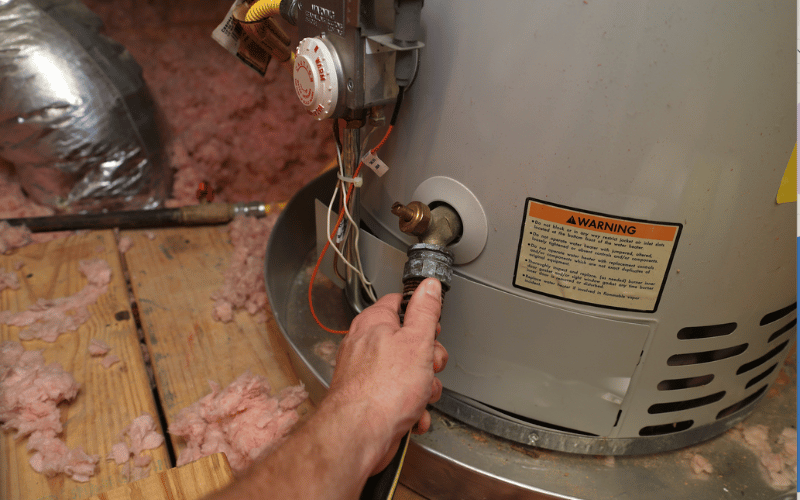Ways to Successfully Care for Your Home's Hot Water SystemEffective Techniques for Caring for Your Home's Hot Water System
Ways to Successfully Care for Your Home's Hot Water SystemEffective Techniques for Caring for Your Home's Hot Water System
Blog Article
What are your opinions on Tips on Maintaining a Water Heater?

Hot water is essential for day-to-day comfort, whether it's for a rejuvenating shower or washing recipes. To guarantee your hot water system runs efficiently and lasts longer, regular upkeep is key. This write-up supplies useful tips and understandings on exactly how to keep your home's warm water system to avoid disturbances and costly fixings.
Intro
Preserving your home's warm water system may seem challenging, yet with a couple of easy actions, you can ensure it operates efficiently for years ahead. This guide covers everything from comprehending your warm water system to DIY maintenance tips and recognizing when to call in expert assistance.
Relevance of Preserving Your Hot Water System
Routine maintenance not just extends the life expectancy of your hot water system yet also ensures it runs effectively. Disregarding upkeep can cause lowered effectiveness, greater power expenses, and also premature failing of the system.
Signs Your Hot Water System Demands Maintenance
Recognizing when your hot water system requires attention can protect against major concerns. Look out for indications such as irregular water temperature, unusual noises from the heating system, or rusty water.
Comprehending Your Warm Water System
Before diving into upkeep tasks, it's practical to recognize the fundamental components of your warm water system. Generally, this consists of the water heater itself, pipelines, anode rods, and temperature level controls.
Month-to-month Upkeep Tasks
Routine month-to-month checks can help capture minor problems before they intensify.
Purging the Water Heater
Purging your water heater gets rid of sediment accumulation, improving efficiency and extending its life.
Monitoring and Changing Anode Rods
Anode rods avoid rust inside the container. Evaluating and replacing them when worn out is important.
Evaluating and Changing Temperature Level Setups
Readjusting the temperature level settings guarantees ideal efficiency and safety and security.
DIY Tips for Maintenance
You can carry out a number of maintenance tasks on your own to maintain your hot water system in top problem.
Looking for Leakages
Consistently evaluate pipelines and links for leakages, as these can cause water damages and greater costs.
Examining Stress Alleviation Valves
Examining the stress safety valve guarantees it operates appropriately and protects against extreme stress accumulation.
Protecting Pipelines
Protecting hot water pipes decreases warm loss and can conserve energy.
When to Call a Professional
While DIY upkeep is valuable, some issues require specialist expertise.
Complex Issues Needing Expert Help
Examples include major leaks, electrical problems, or if your water heater is regularly underperforming.
Routine Expert Maintenance Advantages
Expert upkeep can include thorough inspections, tune-ups, and making certain conformity with security requirements.
Final thought
Routine upkeep of your home's hot water system is essential for efficiency, longevity, and price financial savings. By adhering to these pointers and recognizing when to look for expert help, you can ensure a reliable supply of hot water without unanticipated disturbances.
How to Maintain an Instant Hot Water Heater
Before tinkering with your hot water heater, make sure that it’s not powered on. You also have to turn off the main circuit breaker and shut off the main gas line to prevent accidents. Also turn off the water valves connected to your unit to prevent water from flowing into and out of the appliance. 2. When you’re done, you have to detach the purge valves’ caps. These look like the letter “T” and are situated on either side of the water valves. Doing so will release any pressure that has accumulated inside the valves while at the same time avoid hot water from shooting out and burning your skin. 3. When the purge valves’ caps are removed, you have to connect your hosing lines to the valves. Your unit should have come with three hoses but if it didn’t, you can purchase these things from any hardware or home repair shops. You can also get them from retail stores that sell water heating systems. Read the user’s manual and follow it to complete this task properly. When the hosing lines are connected, open the purge port’s valves. 4. You should never use harsh chemical cleaners or solutions when cleaning your unit. Make use of white vinegar instead. It should be undiluted and you’ll probably use about 2 gallons. 5. Now flush your water heater. This task should probably take about 40 minutes. We can’t give you specific directions for this because the procedure is carried out depending on the type, model and brand of your heater. With that being said, refer to the user’s manual. 6. When you’re done draining the unit, you have to turn off the purge port valves again. Remove the hosing lines that you earlier installed on each of the water valves. Put the valve caps (purge port) back in their respective places and be very careful so as not to damage the rubber discs that are found inside these caps. 7. Now that everything’s back in place, check your user’s manual again to find out how to reactivate your water heating system. 8. Once it is working, turn one of your hot water faucets on just to let air pass through the heater’s water supply pipes. Leave the tap on until water flows smoothly out of it. https://www.orrplumbing.com/blog/2014/september/how-to-maintain-an-instant-hot-water-heater/

We had been made aware of that editorial about How to Maintain a Hot Water Heater in a Few Simple Steps from a buddy on a different web property. Enjoyed reading our posting? Please quickly share it. Let somebody else find it. I am grateful for being here. Please come by our site back soon.
Schedule And Pricing Report this page